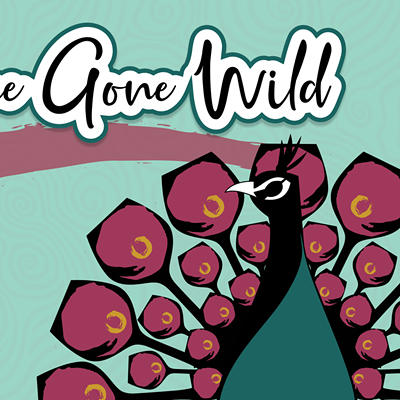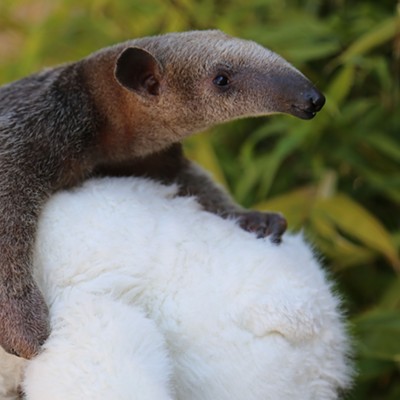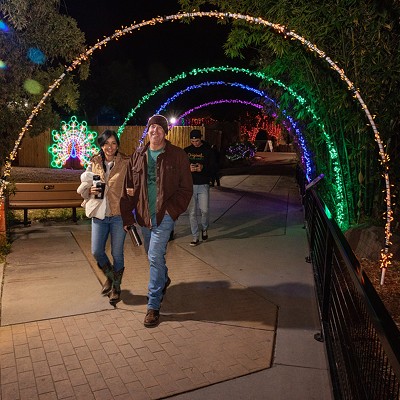Security was tight early in the predawn darkness of Aug. 22, 2003, as seven wild African elephants were trucked to the San Diego Zoo. Their arrival was the culmination of a long, rancorous journey, which began with a $2 million chartered flight from their homeland, and was marked by lawsuits and protests as animal-rights groups fought the transfer—at one point even arranging to have the elephants placed at another African preserve.
San Diego Zoo officials defended the move, claiming that the elephants would be killed if they remained in Swaziland, where officials said their numbers had grown too high. But critics question whether that threat was little more than propaganda to justify the move.
Either way, the San Diego Zoo and the Lowry Park Zoo in Tampa, Fla., cut a deal, paying $385,000 for the elephants, with the money pegged for wildlife conservation in Swaziland.
In the end, the zoos got what they wanted. But beyond the cash, say critics, they paid a huge ethical price by placing these wild elephants in captivity.
According to an account by the group In Defense of Animals, Swaziland officials darted and immobilized 22 elephants in March 2003. Then they allowed staff members from the San Diego and Lowry zoos to handpick 11 of the animals to be removed. The zoos purportedly chose orphans whose parents had been killed during a cull at their former home on a South African preserve. The remaining herd awoke from the tranquilizer to find half of their members missing, said the IDA report.
On Feb. 29, Reid Park's longtime elephants, Connie and Shaba, left for their new home at the San Diego Zoo. Put in their place were two elephants from San Diego, which were part of that herd originally captured in Swaziland. Three more of the San Diego elephants arrived at Reid Park a week later.
On Wednesday, March 28, Reid Park officials were slated to open the new $9.7 million elephant exhibit, Expedition Tanzania. Operating the showcase is expected to cost the city about $400,000 annually.
That's a lot of money for animals that many say should have been left in the wild. Among the critics is Keith Lindsay, a conservation biologist with decades of experience working with elephants in Africa. He's a scientific advisory panel member with the Amboseli Trust for Elephants, a nonprofit dedicated to preserving pachyderm populations in Africa.
Reached at his home in Oxford, England, Lindsay dismissed as "patently ridiculous" the notion that the San Diego and Tampa zoos rescued the Swaziland elephants from death, particularly since there was a sanctuary willing to take them. Nor does he believe the removal of those wild elephants did anything for conservation. He notes that there are but a few hundred elephants in North American zoos, while hundreds of thousands roam the African continent.
"Keeping elephants in zoos doesn't have anything to do with conservation," Lindsay says. He argues that the cost of caring for zoo elephants could be better spent on maintaining African preserves where elephants live in the wild.
For now, the new elephants at Reid Park Zoo are confined to three acres, a destiny they reached after a long voyage marked by upheaval, loss and abounding human ambition.
The herd originated in South Africa's huge Kruger National Park, Lindsay says. But between 1987 and 1994, as many as 37 elephants were transferred from Kruger to Swaziland, where they were confined to a small corner of a preserve. A few years later, the Swaziland preserve managers inexplicably decided they had too many elephants.
"I think there was a level of incompetence in the management of the parks in Swaziland," Lindsay says. "They really didn't have a very clear idea of what they wanted to do."
The preserve managers decided to reduce the herd by 11 elephants, and publicly stated that they planned to kill them, Lindsay says. That sparked fundraising on the elephants' behalf, as organizers with the Save the Wild Elephants Coalition identified another South African preserve that would take them. "So they didn't need to be culled," Lindsay says, "and they didn't need to go to San Diego, either."
Christina Simmons, a spokeswoman for the San Diego Zoo, says there were no alternatives to sending the elephants to her city. "People had suggested they could be sent to some parks in South Africa. But the original elephants that were brought to Swaziland from South Africa came with the legal requirement that they could never return to South Africa. So that was a moot point."
Lindsay claims the conflict mostly involves the steadfast opposition from the Association of Zoos and Aquariums—which accredits Reid Park and other zoos—to placing elephants in sanctuaries. Those roomy preserves, he says, "are a threat to the AZA."
Indeed, media reports have detailed threats by the AZA to pull accreditation from zoos that consider sending their elephants to sanctuaries. But those accounts are denied by association spokesman Steve Feldman.
"First of all, we don't threaten our members," he says. "Our members know that they commit, voluntarily, to meeting high and rising standards of accreditation."
Only that accreditation, Feldman says, can guarantee that a facility has the trained personnel and budget to properly care for elephants. He also argues that zoo elephants provide research information that can help preserve wild populations, and that even the three acres provided for Reid Park's new elephants are preferable to the vagaries of nature.
"Elephants in the wild are not wandering for exercise," he says. "They're running for their lives. They're facing poachers and predators."
In zoos, by contrast, elephants enjoy veterinary care and carefully monitored diets. "While it's qualitatively different than the wild," Feldman says, "there are some advantages."
If so, room to escape from quarrels apparently isn't one of them. In the wild, according to Lindsay, elephants that are feuding or being bullied can simply put some distance between themselves and other animals. In zoos, there's no such recourse. Add to that the stress of being shuffled from zoo to zoo, and you have a recipe for trouble.
That became evident at the San Diego Zoo recently, when one elephant died from traumatic injuries following a nasty encounter with another elephant.
Zoo officials never learned—or at least have not publicly revealed—which elephant prompted the attack. It could quite possibly be one of those that recently arrived at our own Reid Park Zoo, where animals that evolved to roam dozens of miles in a single day will be sequestered on three acres.












